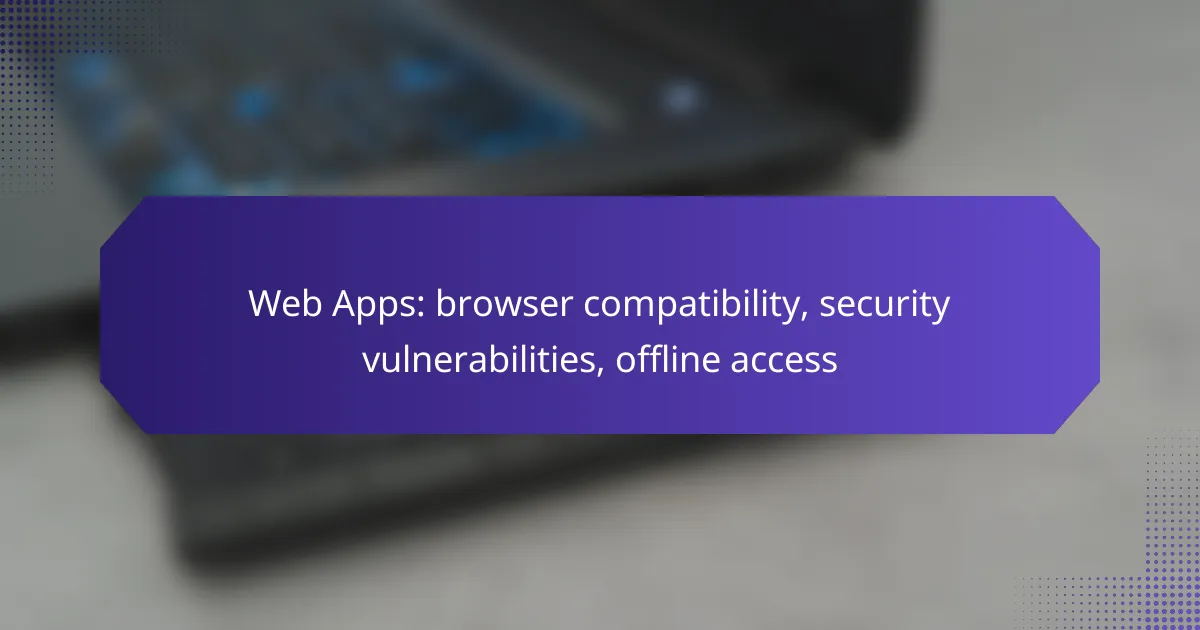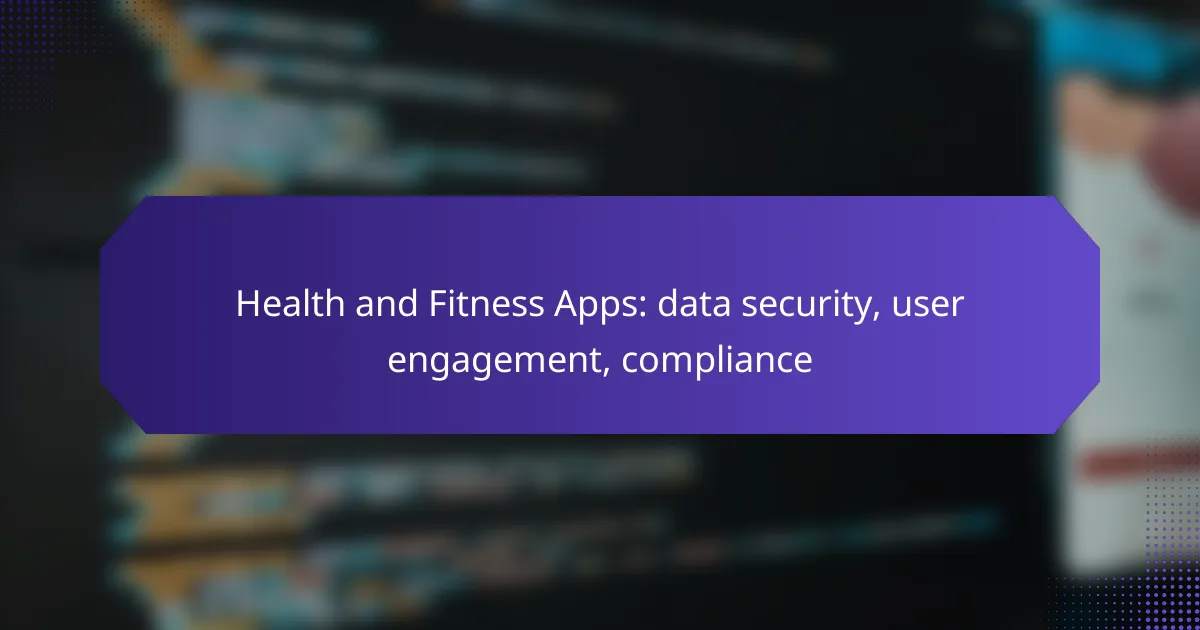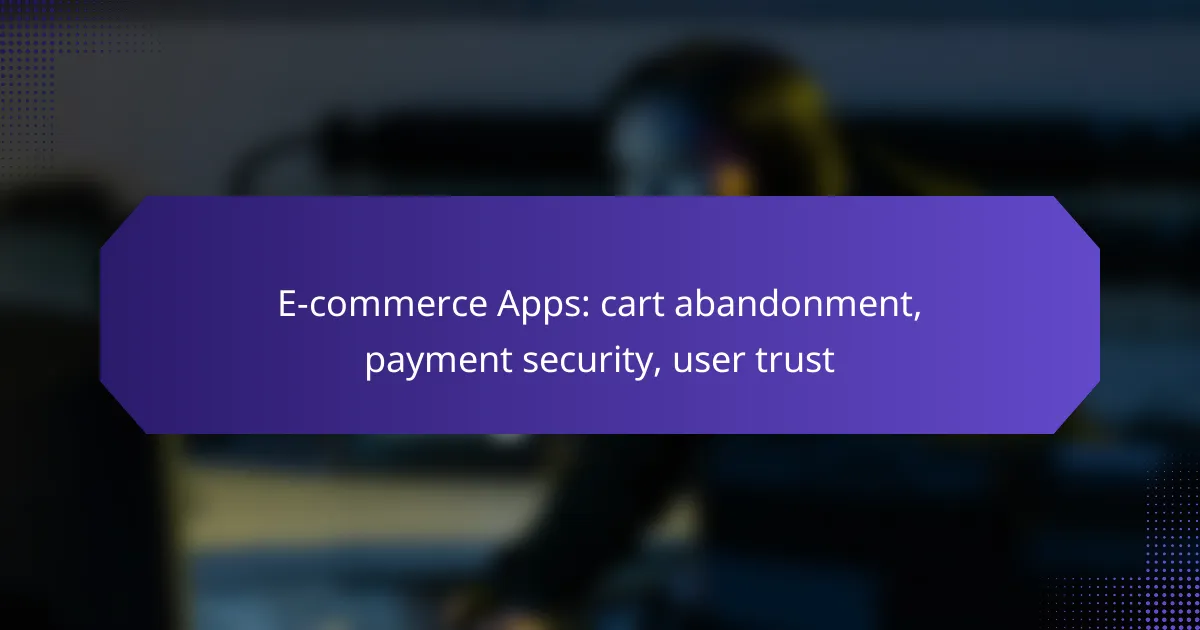Web applications must prioritize browser compatibility, security, and offline access to deliver a reliable user experience. Developers can achieve compatibility by utilizing modern technologies and conducting thorough testing across various browsers. Additionally, understanding and addressing common security vulnerabilities is essential to safeguard user data, while implementing offline access features can enhance usability in low-connectivity environments.
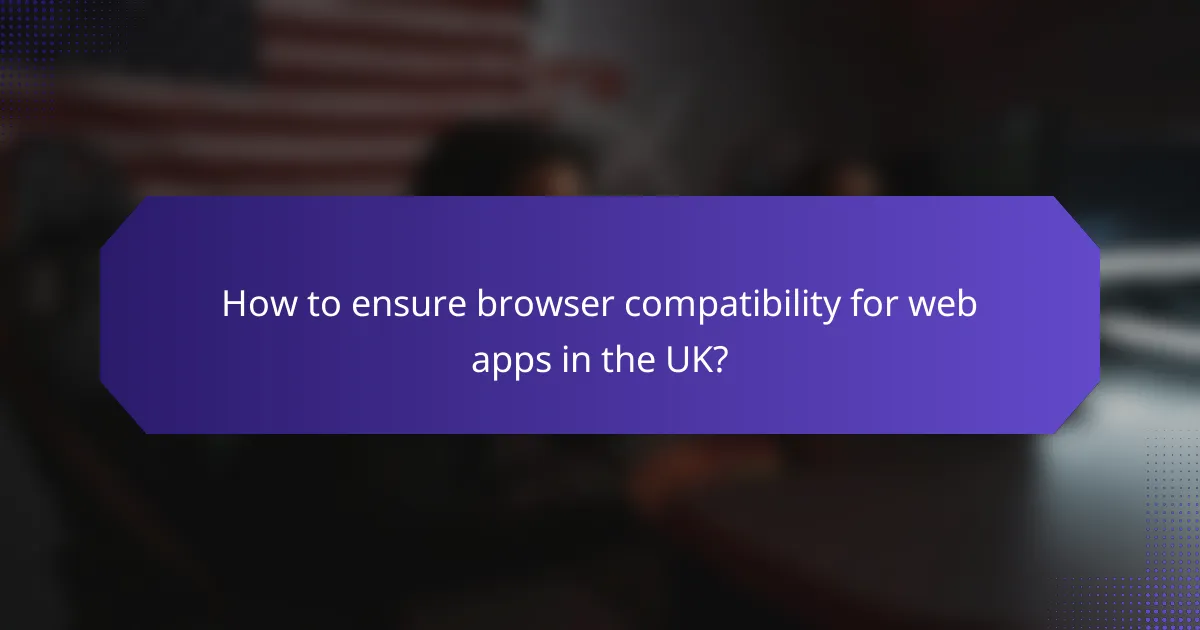
How to ensure browser compatibility for web apps in the UK?
To ensure browser compatibility for web apps in the UK, developers should focus on using modern technologies, thorough testing, and implementing feature detection. These strategies help identify and resolve compatibility issues across different browsers, ensuring a seamless user experience.
Use modern frameworks like React
Utilizing modern frameworks such as React can significantly enhance browser compatibility. These frameworks are designed to handle various browser inconsistencies and provide built-in solutions for common issues. By leveraging React’s component-based architecture, developers can create reusable components that work consistently across multiple browsers.
Additionally, frameworks like React often receive regular updates, which include improvements for compatibility with the latest browser versions. This proactive approach helps mitigate potential issues before they affect users.
Test with BrowserStack
BrowserStack is a powerful tool for testing web applications across a wide range of browsers and devices. It allows developers to see how their web apps perform in real-time on different platforms, including older browser versions that may still be in use. This testing can reveal compatibility issues that might not be apparent in a single-browser environment.
To maximize the effectiveness of BrowserStack, developers should create a testing plan that includes key browsers commonly used in the UK, such as Chrome, Firefox, Safari, and Edge. Regular testing during the development process can help catch and fix issues early.
Implement feature detection
Feature detection is a technique that allows developers to determine whether a browser supports specific features before using them. This approach is more reliable than browser detection, which can lead to false assumptions about compatibility. Libraries like Modernizr can simplify the implementation of feature detection in web apps.
By using feature detection, developers can provide fallbacks or alternative solutions for browsers that do not support certain features. This ensures that all users, regardless of their browser choice, have access to core functionalities of the web app.

What are common security vulnerabilities in web apps?
Common security vulnerabilities in web apps include weaknesses that can be exploited by attackers to gain unauthorized access or manipulate data. Understanding these vulnerabilities is crucial for developers to implement effective security measures and protect user information.
Cross-Site Scripting (XSS)
Cross-Site Scripting (XSS) occurs when an attacker injects malicious scripts into web pages viewed by other users. This can lead to data theft, session hijacking, or defacement of the website. To prevent XSS, developers should validate and sanitize user inputs, and use Content Security Policy (CSP) headers to restrict script execution.
Common types of XSS include stored, reflected, and DOM-based attacks. For instance, stored XSS involves saving the malicious script on the server, while reflected XSS sends the script through a URL. Regular security audits and testing can help identify and mitigate XSS vulnerabilities.
SQL Injection
SQL Injection is a technique where attackers insert malicious SQL queries into input fields to manipulate databases. This can lead to unauthorized access to sensitive data, data loss, or even complete system compromise. To safeguard against SQL Injection, developers should use prepared statements and parameterized queries, which separate SQL code from data inputs.
It is essential to regularly review and update database permissions, ensuring that applications only have the necessary access. Additionally, employing web application firewalls (WAFs) can help detect and block SQL Injection attempts before they reach the database.
Insecure APIs
Insecure APIs can expose web applications to various threats, such as data breaches and unauthorized access. APIs that lack proper authentication and encryption can be easily exploited by attackers. To enhance API security, developers should implement strong authentication mechanisms, such as OAuth, and ensure that all data transmitted is encrypted using HTTPS.
Regularly reviewing API endpoints for vulnerabilities and applying rate limiting can help mitigate risks. Additionally, using API gateways can provide an extra layer of security by monitoring traffic and enforcing security policies across all API interactions.

How to mitigate security risks for web apps?
To mitigate security risks for web apps, implement robust security measures that protect data and user interactions. Key strategies include using secure connections, enforcing content security policies, and keeping software dependencies updated.
Use HTTPS for secure connections
Using HTTPS ensures that data transmitted between the user’s browser and your web app is encrypted, protecting it from interception. This is crucial for safeguarding sensitive information like passwords and payment details.
To implement HTTPS, obtain an SSL/TLS certificate from a trusted certificate authority. Regularly check for certificate expiration and renew it to maintain secure connections.
Implement Content Security Policy (CSP)
A Content Security Policy helps prevent cross-site scripting (XSS) and other code injection attacks by specifying which sources of content are trusted. This reduces the risk of malicious scripts being executed in your web app.
To set up a CSP, define a policy in your HTTP headers that restricts content sources, such as scripts, styles, and images. Regularly review and update the policy as your app evolves to ensure it remains effective.
Regularly update dependencies
Keeping your web app’s dependencies up to date is essential for protecting against known vulnerabilities. Many security breaches occur due to outdated libraries or frameworks that have not been patched.
Establish a routine for checking and updating dependencies, using tools like npm audit or Snyk to identify vulnerabilities. Aim to update dependencies at least quarterly, or more frequently if critical vulnerabilities are reported.
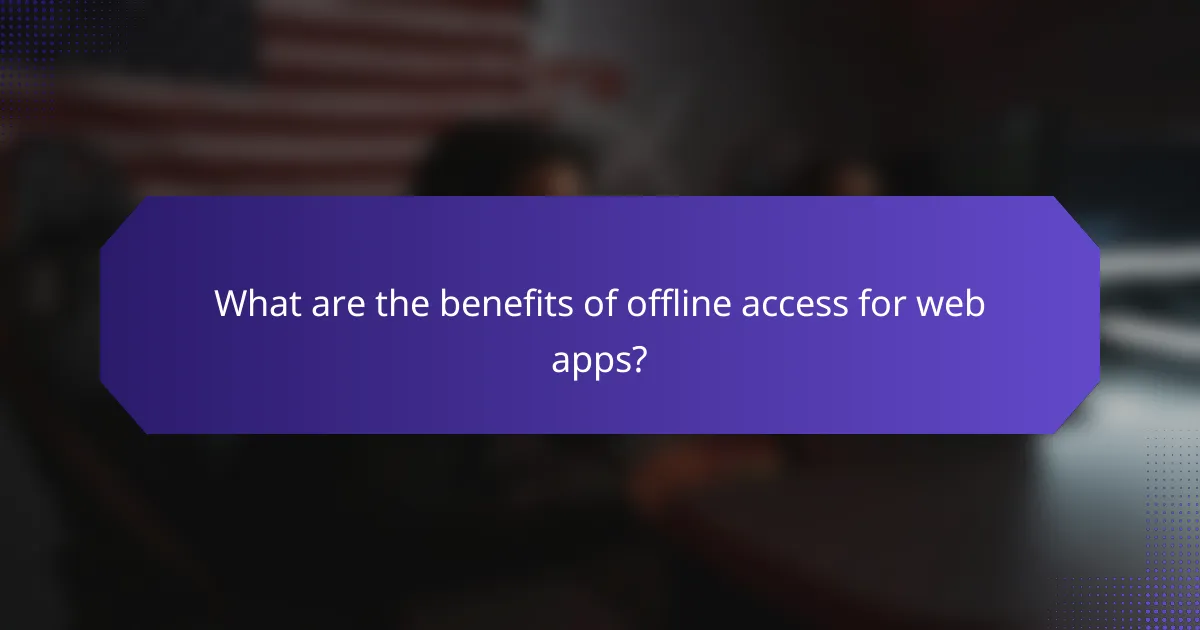
What are the benefits of offline access for web apps?
Offline access for web apps allows users to interact with applications without an active internet connection, enhancing usability and reliability. This capability is particularly beneficial for users in areas with unstable connectivity or for those who need to access information on the go.
Improved user experience
Providing offline access significantly enhances the user experience by allowing seamless interaction with the app regardless of network availability. Users can continue their tasks without interruptions, leading to higher satisfaction and retention rates.
For example, a note-taking app that saves data locally enables users to jot down ideas even when they are in a remote location without internet access. This convenience fosters a more engaging and productive environment.
Increased accessibility in low-connectivity areas
Offline access makes web apps more accessible to users in regions with limited or unreliable internet service. This is crucial for educational tools, health applications, and other services that may be essential in underserved areas.
By allowing users to download content or features for offline use, developers can ensure that their applications remain functional and valuable, regardless of the user’s location or connectivity status.
Enhanced performance
Web apps that support offline functionality often experience improved performance, as they can load data from local storage rather than relying on network requests. This results in faster response times and a smoother user experience.
For instance, applications that cache data locally can reduce loading times to low tens of milliseconds, making interactions feel instantaneous. This performance boost can be particularly beneficial during peak usage times when server load may slow down online access.

How to implement offline access in web apps?
Implementing offline access in web apps allows users to interact with the application without an active internet connection. This is achieved through technologies like service workers, caching strategies, and data synchronization methods.
Utilize Service Workers
Service workers act as a proxy between the web app and the network, enabling the app to intercept network requests and serve cached content when offline. To implement a service worker, register it in your main JavaScript file and define event listeners for install, activate, and fetch events.
Ensure that your service worker is served over HTTPS, as this is a requirement for security. Testing in various browsers is crucial, as support may vary, particularly in older versions.
Cache assets with IndexedDB
IndexedDB is a powerful storage solution for web apps that allows you to store large amounts of structured data, including files and blobs. Use IndexedDB to cache essential assets and user data, ensuring they are available offline.
Consider implementing a versioning system for your cached data to manage updates effectively. This helps avoid conflicts and ensures users have access to the latest content when they reconnect.
Design for data synchronization
Data synchronization is essential for maintaining consistency between the offline and online states of your web app. Implement strategies to queue changes made while offline and sync them with the server once the connection is restored.
Use techniques like optimistic UI updates to enhance user experience, allowing users to see changes immediately while the app handles synchronization in the background. Be mindful of potential conflicts and establish rules for resolving them to ensure data integrity.
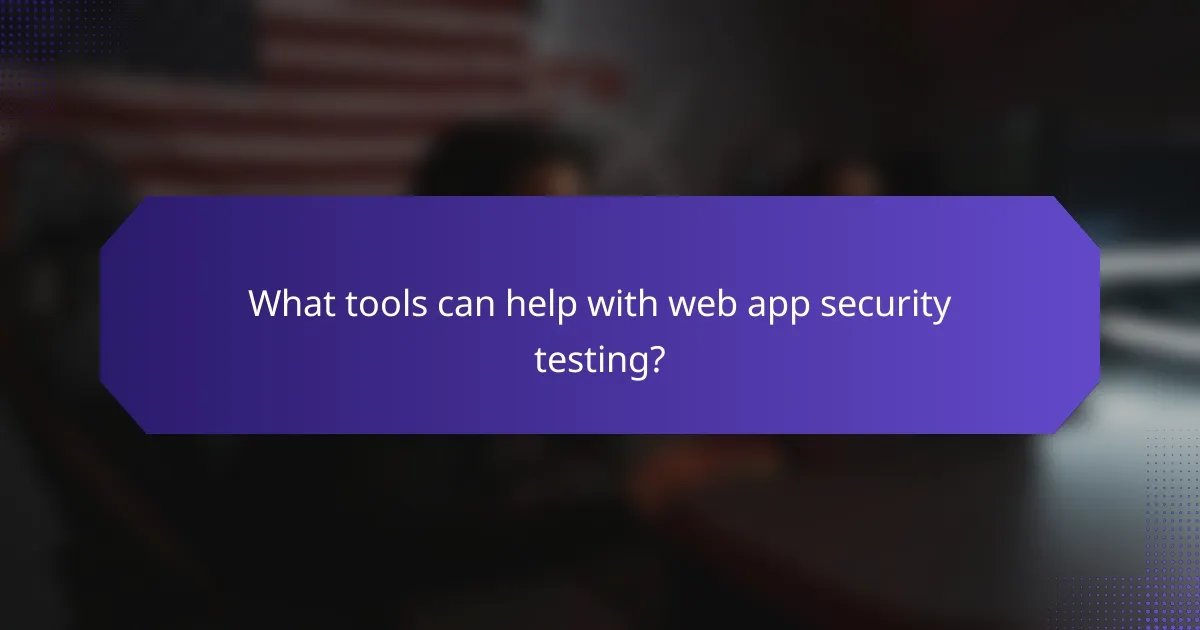
What tools can help with web app security testing?
Several tools are available to assist with web app security testing, focusing on identifying vulnerabilities and ensuring robust protection. These tools often automate the testing process, making it easier to detect security flaws that could be exploited by attackers.
OWASP ZAP
OWASP ZAP (Zed Attack Proxy) is a popular open-source tool designed for finding vulnerabilities in web applications. It offers features like automated scanners and various testing tools that help security professionals and developers identify weaknesses in their applications.
To use OWASP ZAP effectively, start by configuring it as a proxy server to intercept web traffic. This allows you to analyze requests and responses for potential vulnerabilities. Regular updates and community support make it a reliable choice for ongoing security assessments.
Burp Suite
Burp Suite is a comprehensive platform for web application security testing, widely used by security professionals. It includes tools for scanning, crawling, and analyzing web applications, making it suitable for both manual and automated testing.
When using Burp Suite, take advantage of its various features such as the Intruder for automated attacks and the Scanner for vulnerability detection. Consider the Pro version for advanced capabilities, but the free version still offers valuable functionalities for smaller projects.
Qualys Web Application Scanner
Qualys Web Application Scanner is a cloud-based solution that automates the detection of vulnerabilities in web applications. It provides continuous monitoring and assessment, ensuring that your applications remain secure over time.
To utilize Qualys effectively, set up regular scans and review the detailed reports it generates. This tool is particularly beneficial for organizations that require compliance with standards like PCI DSS, as it helps identify and remediate vulnerabilities efficiently.






